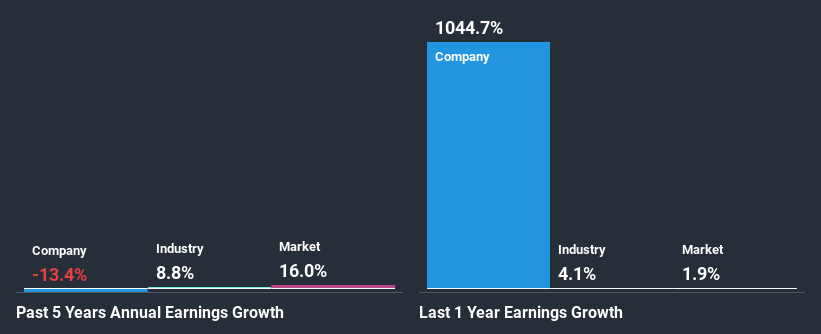Can Mixed Fundamentals Have A Negative Impact on Thomson Reuters Corporation (TSE:TRI) Current Share Price Momentum?

Most readers would already be aware that Thomson Reuters' (TSE:TRI) stock increased significantly by 17% over the past three months. However, we wonder if the company's inconsistent financials would have any adverse impact on the current share price momentum. Specifically, we decided to study Thomson Reuters' ROE in this article.
Return on Equity or ROE is a test of how effectively a company is growing its value and managing investors’ money. Put another way, it reveals the company's success at turning shareholder investments into profits.
View our latest analysis for Thomson Reuters
How Is ROE Calculated?
ROE can be calculated by using the formula:
Return on Equity = Net Profit (from continuing operations) ÷ Shareholders' Equity
So, based on the above formula, the ROE for Thomson Reuters is:
17% = US$1.6b ÷ US$9.3b (Based on the trailing twelve months to June 2020).
The 'return' refers to a company's earnings over the last year. That means that for every CA$1 worth of shareholders' equity, the company generated CA$0.17 in profit.
Why Is ROE Important For Earnings Growth?
So far, we've learned that ROE is a measure of a company's profitability. Depending on how much of these profits the company reinvests or "retains", and how effectively it does so, we are then able to assess a company’s earnings growth potential. Assuming everything else remains unchanged, the higher the ROE and profit retention, the higher the growth rate of a company compared to companies that don't necessarily bear these characteristics.
Thomson Reuters' Earnings Growth And 17% ROE
To begin with, Thomson Reuters seems to have a respectable ROE. Especially when compared to the industry average of 8.2% the company's ROE looks pretty impressive. As you might expect, the 13% net income decline reported by Thomson Reuters is a bit of a surprise. We reckon that there could be some other factors at play here that are preventing the company's growth. These include low earnings retention or poor allocation of capital.
However, when we compared Thomson Reuters' growth with the industry we found that while the company's earnings have been shrinking, the industry has seen an earnings growth of 8.8% in the same period. This is quite worrisome.
Earnings growth is an important metric to consider when valuing a stock. The investor should try to establish if the expected growth or decline in earnings, whichever the case may be, is priced in. By doing so, they will have an idea if the stock is headed into clear blue waters or if swampy waters await. Is Thomson Reuters fairly valued compared to other companies? These 3 valuation measures might help you decide.
Is Thomson Reuters Efficiently Re-investing Its Profits?
Thomson Reuters' high three-year median payout ratio of 174% suggests that the company is depleting its resources to keep up its dividend payments, and this shows in its shrinking earnings. Its usually very hard to sustain dividend payments that are higher than reported profits. To know the 4 risks we have identified for Thomson Reuters visit our risks dashboard for free.
Moreover, Thomson Reuters has been paying dividends for at least ten years or more suggesting that management must have perceived that the shareholders prefer dividends over earnings growth. Upon studying the latest analysts' consensus data, we found that the company's future payout ratio is expected to drop to 84% over the next three years. However, Thomson Reuters' future ROE is expected to decline to 11% despite the expected decline in its payout ratio. We infer that there could be other factors that could be steering the foreseen decline in the company's ROE.
Summary
In total, we're a bit ambivalent about Thomson Reuters' performance. While the company does have a high rate of return, its low earnings retention is probably what's hampering its earnings growth. That being so, the latest industry analyst forecasts show that analysts are forecasting a slight improvement in the company's future earnings growth. This could offer some relief to the company's existing shareholders. To know more about the company's future earnings growth forecasts take a look at this free report on analyst forecasts for the company to find out more.
This article by Simply Wall St is general in nature. It does not constitute a recommendation to buy or sell any stock, and does not take account of your objectives, or your financial situation. We aim to bring you long-term focused analysis driven by fundamental data. Note that our analysis may not factor in the latest price-sensitive company announcements or qualitative material. Simply Wall St has no position in any stocks mentioned.
Have feedback on this article? Concerned about the content? Get in touch with us directly. Alternatively, email editorial-team@simplywallst.com.

 Yahoo Finance
Yahoo Finance 
